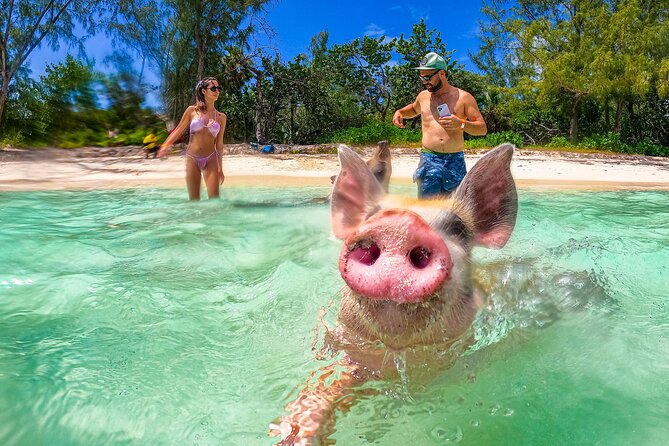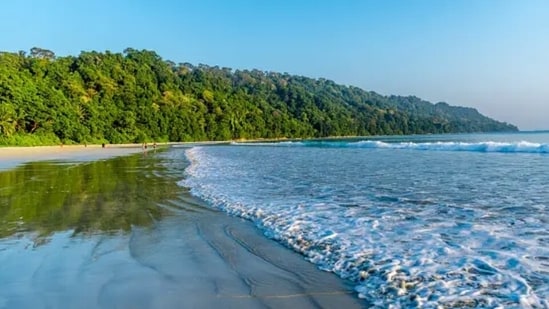Eco-Paradise Found: Discovering Beaches Where Conservation Comes First

The whisper of waves, the soft caress of sand, the vibrant hues of a sunset over the ocean – these are the images that often spring to mind when we dream of a beach vacation. But increasingly, travelers are seeking more than just picture-perfect scenery. They're looking for destinations that actively contribute to environmental conservation, places where their footprints leave a positive impact. The era of mindless mass tourism is fading, replaced by a desire for authentic, sustainable experiences. Join us as we explore three unique beaches around the world where conservation comes first, offering not just beauty, but a chance to be part of something bigger.
Beach 1: Pig Beach, Bahamas – A Swine-Sational Sanctuary
The Exumas in the Bahamas are famous for one thing: the swimming pigs of Pig Beach (officially known as Big Major Cay). While these adorable animals attract thousands of visitors, their presence necessitates careful management to ensure both their well-being and the preservation of the beach's fragile ecosystem.
Humane Management and Ecosystem Preservation:
The local community and several organizations are diligently working to manage the pig population humanely. This includes providing fresh water, creating shaded areas, and regulating tourist interactions to prevent overfeeding and stress.
Responsible Tourist Interactions:
As a visitor, you play a crucial role in Pig Beach's sustainability. Here's how to interact responsibly:
- No Processed Foods: Resist the urge to feed the pigs anything other than their natural diet. Processed foods can make them sick and disrupt their natural foraging habits.
- Respect Their Space: Observe the pigs from a respectful distance. Avoid crowding or chasing them, as this can cause stress.
- Follow Local Guidelines: Adhere to any rules or instructions provided by local guides or signage.
Local Conservation Initiatives:
Beyond the pigs themselves, Pig Beach benefits from broader conservation efforts. Waste management programs aim to minimize plastic pollution, and initiatives are in place to protect the surrounding marine environment, including seagrass beds and coral reefs. Contributing to these initiatives through donations or volunteering can make a real difference.

Beach 2: Maya Bay, Thailand – A Story of Restoration
Maya Bay, made famous by the movie "The Beach," suffered greatly from over-tourism. The sheer volume of visitors damaged its coral reefs and degraded its natural beauty, leading to its closure in 2018. However, this closure paved the way for a remarkable restoration effort.
Replanting and Regulations:
Since its reopening with revised regulations, Maya Bay has become a symbol of hope for sustainable tourism. Coral replanting projects have introduced thousands of new coral colonies, and strict visitor limits are enforced to prevent future damage. Boats are no longer allowed to enter the bay directly, and visitors are required to walk from a nearby pier.
Minimizing Environmental Impact:
These new regulations are designed to minimize environmental impact and promote responsible tourism:
- Visitor Limits: Only a limited number of visitors are allowed on the beach at any given time.
- Restricted Access: Boats are prohibited from entering the main bay, reducing noise and pollution.
- Waste Management: Enhanced waste management systems are in place to keep the beach clean.
Visitor Testimonials:
Visitors who have experienced Maya Bay since its reopening rave about the improved experience. The beach is cleaner, the water is clearer, and the atmosphere is much more peaceful. These positive changes are a testament to the effectiveness of the restoration efforts and the importance of sustainable tourism practices.
Beach 3: Radhanagar Beach, Havelock Island, India – Certified Eco-Excellence
Radhanagar Beach, consistently ranked among Asia's best beaches, boasts pristine white sands and turquoise waters. But its beauty is matched by its commitment to eco-tourism certifications and practices.
Eco-Tourism Certifications and Practices:
Radhanagar Beach has earned various eco-tourism certifications, demonstrating its dedication to sustainability. These certifications involve meeting strict criteria related to environmental protection, waste management, and community involvement.
Local Communities and Sustainable Travel:
The local communities play a vital role in preserving Radhanagar Beach's natural beauty and promoting sustainable travel options. Eco-friendly accommodations, such as resorts built with sustainable materials and powered by renewable energy, are available. Locally sourced food is also emphasized, supporting local farmers and reducing the carbon footprint associated with food transportation.
Impact on the Local Economy and Environment:
These practices have a positive impact on both the local economy and the environment. Sustainable tourism creates jobs for local residents and provides them with opportunities to share their culture and traditions. It also helps to protect the beach's natural resources, ensuring its long-term health and beauty.

The Global Ecological Impact of Tourism on Beaches
The allure of beaches draws millions of tourists annually, but this influx can have detrimental effects on delicate coastal ecosystems.
Common Issues:
- Plastic Pollution: Single-use plastics, from bottles to bags, litter beaches and pollute the ocean, harming marine life.
- Coral Reef Damage: Careless divers, boat anchors, and pollution contribute to the destruction of vibrant coral reefs.
- Habitat Destruction: Coastal development, including resorts and infrastructure, can destroy critical habitats for shorebirds, turtles, and other species.
Minimizing Your Impact:
Fortunately, there are many ways to minimize your ecological footprint while enjoying a beach vacation:
- Choose Eco-Friendly Accommodations: Opt for hotels and resorts that prioritize sustainability, such as those with eco-certifications.
- Reduce Plastic Consumption: Bring your own reusable water bottle, shopping bag, and toiletries. Avoid single-use plastics whenever possible.
- Respect Wildlife: Observe marine life from a distance and avoid disturbing their natural habitats. Never feed wild animals.
- Support Local Communities: Choose local businesses and restaurants to support the local economy and reduce the environmental impact of transportation.
Take Action: Support Sustainable Tourism
You can actively support sustainable tourism initiatives in these and other locations by:
- Donating to Local Conservation Organizations: Many organizations are working to protect beaches and marine environments. Consider donating to support their efforts.
- Volunteering in Environmental Projects: Participate in beach cleanups, coral replanting projects, or other environmental initiatives.
- Booking Eco-Certified Hotels: Choose accommodations that have been certified for their sustainable practices.
Conclusion: Preserving Paradise for Future Generations
Choosing eco-friendly travel options is essential for preserving our planet's natural wonders. By supporting sustainable tourism initiatives, we can help protect these beaches for future generations to enjoy. Let's embrace responsible travel and make a positive impact on the world, one beach at a time.
Share your own experiences with sustainable travel in the comments below and contribute to the conversation about eco-tourism!